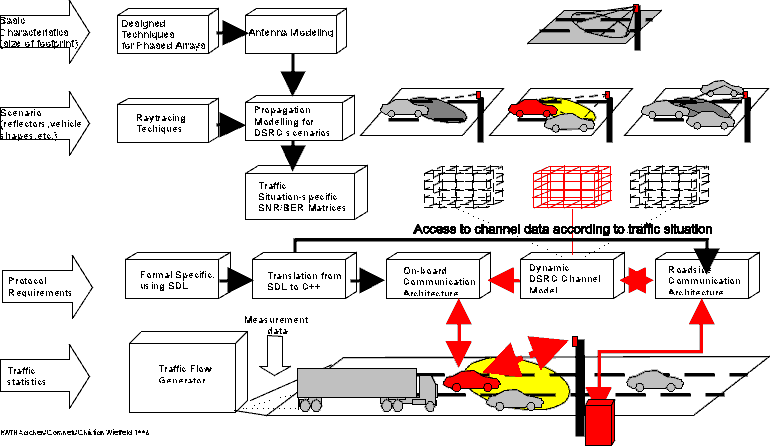
 |
JPL's Wireless Communication Reference WebsiteChapter: Network Concepts and Standards
|
In order to determine the optimal system parameters and components of DSRC systems before the actual implementation, reliable performance evaluation methods are needed by system designers as well as system operators. Typical performance parameters are for example the transaction failure rate of the offered services, the interference between different services, the optimal control parameters for the communication protocols, the usage ratio of the communication zone and the influence of physical link characteristics (such as windscreen attenuation). During the standardization process, the comparison of the various proposed options under controlled conditions, e.g. different Medium Access Control schemes proposed in Europe and North America [11], has been enabled by the usage of appropriate performance evaluation tools. Furthermore the very low transaction failure rates specified by some applications (for example 10-6 for AFC) cannot be proven by field tests only, since the number of vehicle passages will usually not be sufficient to guarantee a certain transaction failure rate. Figure 11 shows an approach for the performance evaluation of DSRC systems based on integrated simulation models for vehicle mobility, channel behaviour and communication protocols.

Figure 11: Overview simulation model
Based on the object-oriented ComNets C++ Class Library (CNCL) the event-driven, stochastic simulation tool SImulation of Mobile COmmunications (SIMCO3++) for the evaluation of the DSRC (Dedicated Short-Range Communications) has been developed [12]. The simulation concept (see figure 11) integrates: